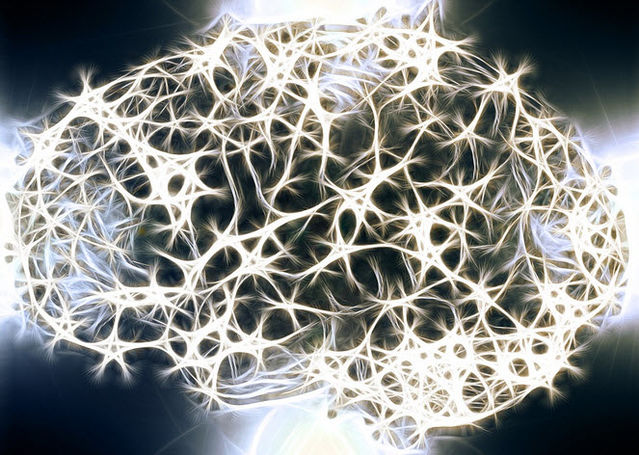Neuroscience
How Stem Cell Innovation Has Advanced Neuroscience Research
Scientists grow human brain tissue with neural activity that lasts for months.
Posted October 23, 2018

One of the gating factors in studying the human brain is having the ability to conduct research on actual functioning human brain tissue. As a result, many scientific studies are conducted on rodents as a mammalian proxy. The drawback to this approach is that rodent brains are different in structure and function. According to Johns Hopkins, structurally, the human brain is approximately 30 percent neurons and 70 percent glia, while the mouse brain has the opposite ratio [1]. MIT researchers discovered that dendrites of human neurons carry electrical signals differently than rodent neurons [2]. An innovative alternative is to grow human brain tissue using stem cell technology.
Stem cells are unspecialized cells that give rise to differentiated cells. It’s a relatively recent discovery dating back to the 80’s. Embryonic stem cells were first discovered in 1981 by Sir Martin Evans of Cardiff University, UK, then at the University of Cambridge, a 2007 Nobel Laureate in medicine [3].
In 1998, isolate human embryonic stem cells were grown in a lab by James Thomson of the University of Wisconsin in Madison and John Gearhart of Johns Hopkins University in Baltimore [4].
Eight years later, Shinya Yamanaka of Kyoto University in Japan discovered a method to transform skin cells of mice to pluripotent stem cells using a virus to introduce four genes [5]. Pluripotent stem cells have the ability to develop into other types of cells. Yamanaka, along with John B. Gurdon, won the Nobel Prize in Physiology or Medicine 2012 for the discovery that mature cells can be reprogrammed to become pluripotent [6]. This concept is known as induced pluripotent stem cells, or iPSCs.
In 2013, a European research team of scientists, led by Madeline Lancaster and Juergen Knoblich, developed a three-dimensional (3D) cerebral organoid using human pluripotent stem cells that “grew to about four millimeters in size and could survive as long as 10 months. [7].” This was a major breakthrough as prior neuron models were cultured in 2D.
More recently, in October 2018, a team of Tufts-led scientists grew a 3D model of human brain tissue that exhibited spontaneous neural activity for at least nine months. The study was published in October 2018 in ACS Biomaterials Science & Engineering, a journal of the American Chemical Society [8].
From the initial discovery of stem cells in mice to growing 3D human neural networks models from pluripotent stem cells in less than 40 years, the pace of scientific advancement has been exponential. These 3D human brain tissue models may help advance research in discovering new treatments for Alzheimer’s, Parkinson’s, Huntington’s, muscular dystrophy, epilepsy, amyotrophic lateral sclerosis (also known as ALS or Lou Gehrig's disease), and many other diseases and disorders of the brain. The tools that neuroscience uses for research are evolving in sophistication, and stem cells play an important role in the acceleration of progress to benefit humanity.
Copyright © 2018 Cami Rosso All rights reserved.
References
1. Hendricks, Melissa. “The Mouse Model: Less than Perfect, Still Invaluable.” Johns Hopkins. October 2010. Retrieved from https://www.hopkinsmedicine.org/institute_basic_biomedical_sciences/new…
2. Rosso, Cami. “Why Does the Human Brain Exhibit Higher Intelligence?” Psychology Today. October 19, 2018.
3. Cardiff University. “Sir Martin Evans, Nobel Prize in Medicine.” Retrieved 23 October 2018 from http://www.cardiff.ac.uk/about/honours-and-awards/nobel-laureates/sir-m…
4. Heart Views. “Stem Cell Timeline.” 2015 Apr-Jun. Retrieved on 10-23-2018 from https://www.ncbi.nlm.nih.gov/pmc/articles/PMC4485209/#
5. Scudellari, Megan. “How iPS cells changed the world.” Nature. 15 June 2016.
6. The Nobel Prize (2012-10-08). “The Nobel Prize in Physiology or Medicine 2012 [Press Release]. Retrieved 23 October 2018 from https://www.nobelprize.org/prizes/medicine/2012/press-release/
7. Rojahn, Susan Young. “Scientists Grow 3-D Human Brain Tissues.” MIT Technology Review. August 28, 2013.
1. Cantley, William L.; Du, Chuang; Lomoio, Selene; DePalma, Thomas; Peirent, Emily; Kleinknecht, Dominic; Hunter, Martin; Tang-Schomer, Min D.; Tesco, Giuseppina; Kaplan, David L.” Functional and Sustainable 3D Human Neural Network Models from Pluripotent Stem Cells.”ACS Biomaterials Science & Engineering, a journal of the American Chemical Society. October 1, 2018.


